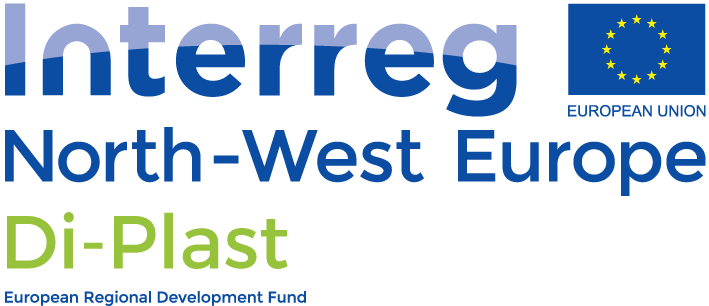https://player.vimeo.com/video/670138203
Matrix Tool:
Matrix Tool increases the use of recycled plastic material (recyclate) by matching converter requirements with recyclate supply.
Type of tool:
Web application
Required skills:
- Knowledge of material properties
- No programming or data science knowledge needed
Disclaimer:
The Di-Plast project team is not responsible for the consequences of the incorrect application of the content.
Tool guideline and access
- Before you get started, take a look at the :guidelines and make yourself familiar with how to use the tool.
and make yourself familiar with how to use the tool.
- You can access the tool directly at https://matrix.sis.cs.uos.de/login.xhtml . At first, the admin will open an account for you. After that, you have to log in there using your username and password.
. At first, the admin will open an account for you. After that, you have to log in there using your username and password.
- You can also access the tool via github at https://matrix.sis.cs.uos.de/login.xhtml .
.
Use case/problem:
Problem finding the right recycled material for your virgin material?
- The matrix tool can help you find the right replacement recyclate or rPM (recycled plastic material) by providing a database of possible materials and the ability to make expert-based suggestions for alternative recyclates.
Description of the problem the tools solves:
European Commission has the goal of reaching a circular economy and plastics have a crucial role in reaching this goal. Plastics are used in many sectors such as packaging, building and construction, textiles, consumer products, transportation, electrical and electronics, and so on. Thus it is important to close the plastic loop to reach a sustainable and resource-efficient economy. One of the ways of achieving the goal is to use recyclate (recycled plastic) as an alternative to the virgin material for new plastic products. Although there is a high demand for recyclate material in the market, a very small amount of product is made from recyclate. This indicates the presence of some challenges in the uptake of the recyclate. Therefore, the main goal of the Interreg Di-Plast project was to increase the uptake of recyclate among the companies. The Matrix Tool was developed for this purpose.
Advantages of the tool:
- It works allowing converters to easily select the material that matches their process or product requirements. Once they put their desired specifications (polymer type, processing technology, properties, etc.) in the tool, it will search the current recyclate supply for exact matches. If no exact matches exist in the current database, the tool will use an algorithm to recommend alternative recyclates which do not exactly match the filled-in specifications.
- It also works allowing recyclate suppliers to make their materials easier to find. A separate tab on the web-based tool shows the current demand for recyclate batches with a specified set of properties that have not been resolved yet. This information can be used by suppliers to sell their recyclate more targeted way. Furthermore, this information can be used by suppliers to modify their materials to these specifications.
Explanation of commonly used material properties:
MFI: This property gives an indication of the fluidity of the molten polymer. It is an important value for the prediction of processing behaviour. Thus, this is one of the main properties used in material selection. The MFI could be seen as a measured viscosity at a single temperature and shear rate. It is often measured at a specified temperature and weight. However, due to the fact that the viscosity of polymers is shear-dependent, the MFI could also be measured at multiple weights (shear rates).
Impact strength: It denotes the energy needed for the fracture of a material. The greater the value, the more resistant the material is to breaking upon impact. It can be measured via Charpy or Izod methods. Samples could be measured notched or unnotched. Notched values are lower than unnotched values due to the limitation of energy dissipation throughout the sample. Furthermore, the impact strength can be measured at different temperatures to predict impact behavior in different environments.
E-modulus (tensile modulus): It denotes the stiffness of a material in the tensile direction. For blown films this value is measured in the machine direction and transverse direction.
Flexural modulus: It denotes the stiffness of a material in the flexural direction.
Strain at yield: It denotes the strain (percentage of elongation) of the material at its maximum elastic point. Deformation lower than this value is elastic, meaning the material can return to its original shape. Deformation greater than this value is plastic, meaning the material is permanently deformed. For blown films this value is measured in the machine direction and transverse direction.
Stress at yield: It is the applied stress at yield strain. This value is the maximum stress that can be applied to a material before plastically deforming. For blown films this value is measured in the machine direction and transverse direction.
Strain at break: It denotes the strain (percentage of elongation) of the material at its breaking point. The strain at break gives information about the ductility of a material. For blown films this value is measured in the machine direction and transverse direction.
Vicat softening temperature: It denotes the temperature at which the material loses its hardness.
Heat deflection temperature: It is a measure of a polymer's resistance to alteration under a given load at an elevated temperature.
Contact person of the tool:
Nils Schut and Leonid Schwenke
Related tools:
- Analyse and Visualize your process data with data analytics -> Data Analytics
- Get guidance to set up a working data infrastucture -> Data Infrastructure Wiki
- Find the right sensor to survey your process -> Sensor Tool
- Improve internal information and material flow -> VSM
